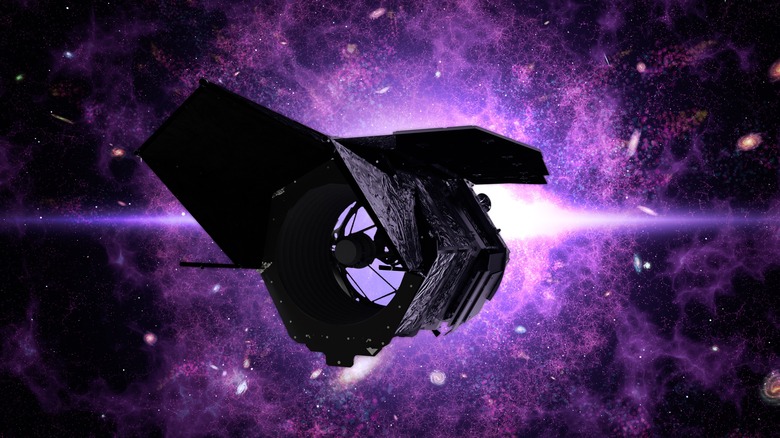Everything We Know About NASA's Nancy Grace Roman Space Telescope
NASA has a number of space telescopes operating, from the big famous ones used for a variety of projects like Hubble and the James Webb Space Telescope to lesser-known ones like NuSTAR, which looks in the X-ray wavelength, or Swift, which investigates gamma ray bursts. But soon they will be joined by another big space telescope with the planned launch of the Nancy Grace Roman Space Telescope in 2027. Roman, as it is called, will work on projects as diverse as hunting for new exoplanets to learning about dark energy. It is named after the woman who worked for decades to get the Hubble Space Telescope equipped for research (via NASA).
Roman will have a 2.4 meter diameter primary mirror, which is the same size as Hubble's (via NASA). But its instruments will observe a much wider field of view, including one that has a field of view 100 times larger than Hubble's infrared instrument. This will allow the telescope to look at large chunks of the sky at a time.
The telescope will be armed with two instruments, the Wide Field Instrument and the Coronagraph Instrument. The Wide Field Instrument will be the primary camera, taking in light through the visible light spectrum and into the near-infrared. The coronagraph instrument has a system for blocking out very bright light sources like stars so fainter objects nearby can be seen more clearly, like blocking out a host star's light to observe a planet orbiting it.
What Roman will study
One of the main things for Roman to study will be exoplanets: Planets outside our solar system. While we've discovered an incredible number of exoplanets — over 5,000 so far — that's just a minute fraction of the total planets out there in the galaxy. One of Roman's aims will be to make an estimate of just how many exoplanets there are in the Milky Way, and whether the systems, which do have planets, are distributed in a certain way.
For this project, Roman will be used in a survey called the Roman Galactic Exoplanet Survey (RGES) to get an overall picture of planetary systems throughout the galaxy (via Digital Trends).
Roman has a particular way that it will hunt for exoplanets. Currently, many exoplanets detected by telescopes like NASA's Transiting Exoplanet Survey Satellite or TESS are found using a method called the transit method. This is where a telescope points at a star and looks at its brightness over time. If a planet passes in front of the star, between it and the telescope, the star's brightness will drop a tiny bit. This is what allows researchers to identify exoplanets (via NASA).
Roman will use the transit method too, as well as directly imaging some exoplanets (via NASA). But primarily it will use a technique called microlensing, which takes advantage of the way that gravity causes spacetime to bend. If one star passes in front of another, the gravity of the star in front will warp the light from the one behind, and if the foreground star has planets around it then that can be detected too. This method is great for finding planets which are Earth-mass or smaller, and could perhaps even detect large moons (via NASA).
Roman is currently scheduled for launch by May 2027.
